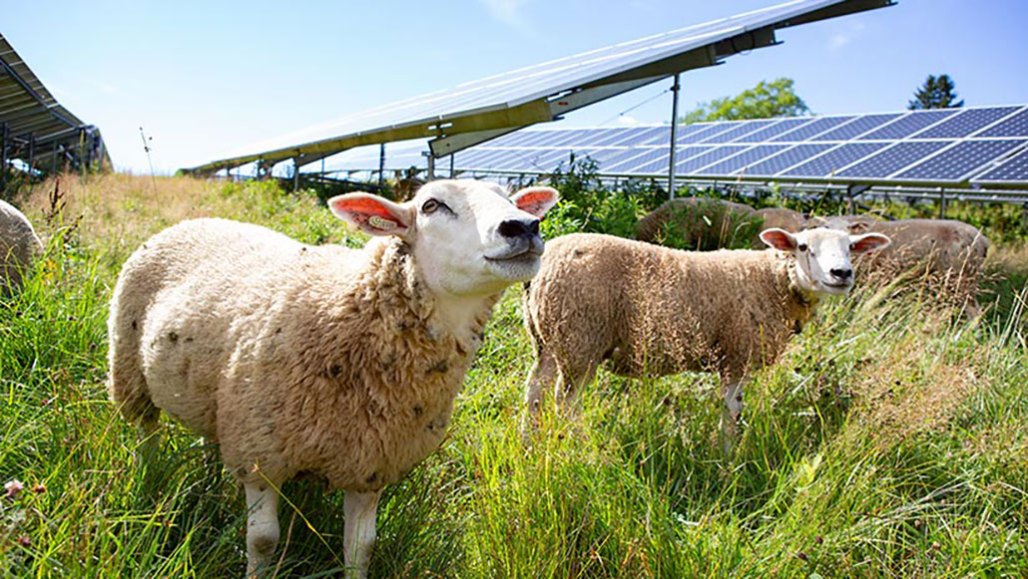Questions for ‘With tech, farms can double up to produce both food and power’

Agrivoltaic projects bring together farms and solar energy production. Photovoltaic panels can sit atop fields of forage grasses for livestock, such as these sheep.
Lexie Hahn/lightsource bp
Share this:
- Share via email (Opens in new window) Email
- Click to share on Facebook (Opens in new window) Facebook
- Click to share on X (Opens in new window) X
- Click to share on Pinterest (Opens in new window) Pinterest
- Click to share on Reddit (Opens in new window) Reddit
- Share to Google Classroom (Opens in new window) Google Classroom
- Click to print (Opens in new window) Print
To accompany ‘With tech, farms can double up to produce both food and power’
SCIENCE
Before Reading:
- Describe what comes to mind when you hear the word “voltage.” Describe two ways that voltage-related technologies improve our lives. Generally speaking, do you feel that widespread use of such technologies has an overall negative or positive impact on our environment? Briefly explain your answer.
- How might the day-to-day life of a farmer change seasonally? Describe two difficult challenges a farmer might face that an office worker would not.
During Reading:
- In which U.S. state is David Dickey’s farm located? What crop does this farm grow? Besides crops, what else does this farm produce?
- What are photovoltaic materials?
- What is one advantage of generating power with solar panels compared with fossil fuels?
- How might agrivoltaic projects benefit farmers?
- List three countries besides the U.S. that are experimenting with agrivoltaic systems. For each country, identify one crop being paired with agrivoltaic technology.
- What are researchers and farmers at Jack’s Solar Garden trying to learn?
- Give two examples of shade-loving food plants, according to Allison Jackson. Which are more likely to benefit from agrivoltaic pairings — shade-loving or sun-loving plants?
- According to an NREL report, how many hectares of solar panels would the U.S. need to meet the country’s demand for electricity?
- What problem did Lily Calderwood encounter when pairing tall-bush blueberries with a grid of solar panels?
- What farming challenge can be created by the machinery needed to build solar arrays?
After Reading:
- This story discusses agrivoltaic technology applied to rural farmland. Now consider how a typical city that lacks farmland might use agrivoltaic-inspired technology. List three possible urban locations where agrivoltaics might be useful. Feel free to be creative! For example, one of your three locations could be skyscraper rooftops. What you come up with may look very different from what this story describes. (Hint: Cities without farmland still have plants! Think about where plants grow currently or where they could grow if given the proper setup.) Pick one of your locations and draw a picture illustrating how this idea might work. Use your illustration to point out two potential benefits of your vision.
- Lily Calderwood states that farmers interested in agrivoltaics must decide what they want before they start building. What does she mean by this? Why might some be tempted to ignore this advice? What could be the consequences of ignoring such advice?